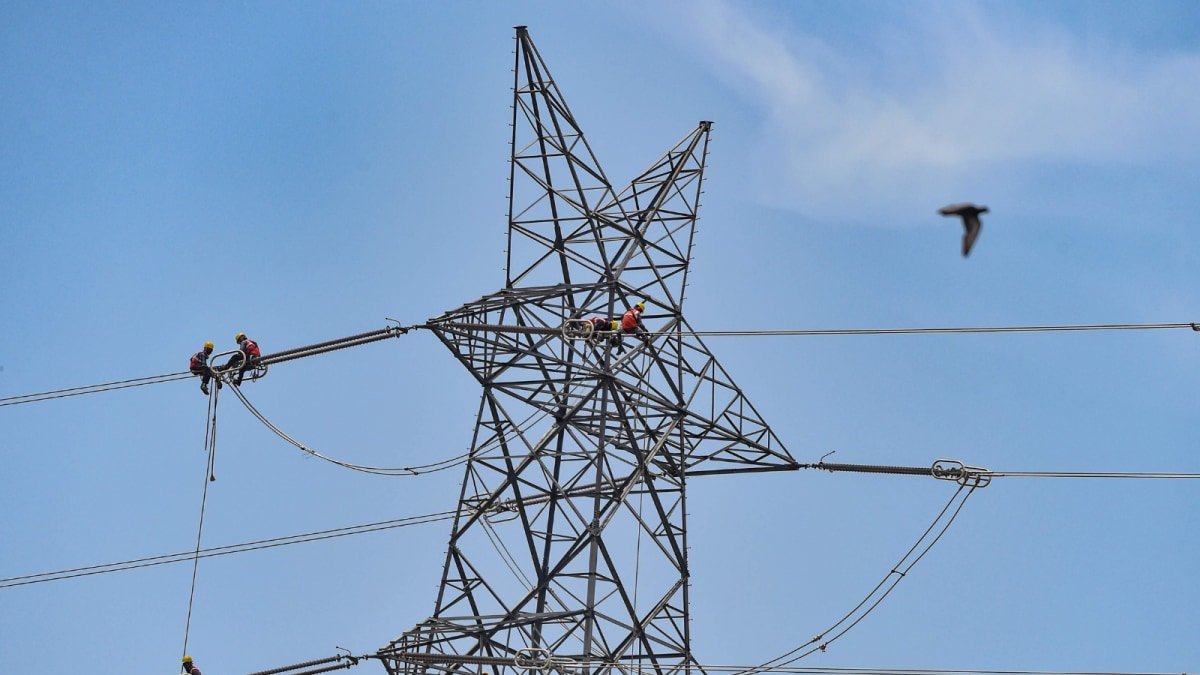Last Updated:June 11, 2025, 15:39 IST
As heatwaves intensify, we urgently need smarter ways to manage energy demand, particularly for cooling.
In the summer of 2024 alone, the capital recorded 32 days above 40°C — the highest in 14 years — and a peak electricity demand of 8.6 GW. (Representative/PTI)
Authored By Paras Bhattarai:
As temperatures climb and heatwaves grow more severe, cities like Delhi are on the frontlines of a climate crisis. In the summer of 2024 alone, the capital recorded 32 days above 40°C — the highest in 14 years — and a peak electricity demand of 8.6 GW. That number is expected to cross 9 GW this year.
Driving this surge is a rapid rise in air conditioner (AC) usage, with ACs now present in nearly 40% of Delhi’s homes. Space cooling alone accounts for over half the city’s peak electricity demand during extreme heat, with ACs being the major contributor. The challenge intensifies during evening hours when AC use remains high but solar power drops off, putting enormous pressure on the grid.
This rising demand threatens to outstrip infrastructure capacity, causing voltage fluctuations, transformer failures, and expensive emergency power purchases by distribution companies (DISCOMs). As heatwaves intensify, we urgently need smarter ways to manage energy demand, particularly for cooling.
The Case for Demand Response
Instead of building costly power plants that remain idle most of the year, India can tap a more efficient and scalable alternative: Demand response (DR). DR allows energy providers to encourage consumers to reduce or shift electricity use during peak hours. By adjusting demand rather than scrambling to meet it, DR helps maintain grid stability cost-effectively.
This becomes even more effective with Automated Demand Response (ADR), which uses smart technology to reduce energy use — such as temporarily switching off ACs — without compromising much on thermal comfort. ADR systems can operate via long-range radio frequency, Wi-Fi, or cellular networks, enabling seamless, real-time energy management.
In Delhi, a first-of-its-kind ADR pilot targeting residential ACs achieved up to a 78% reduction in electricity demand during peak hours. An analysis by the Alliance for an Energy Efficient Economy (AEEE) suggests that embedding DR capability in ACs across India could cut electricity demand by 8 GW by 2030 — a game-changer for India’s power grid.
Currently, there are 14 active demand response programs across various states in the US, engaging over 4 million customers and delivering approximately 1.5 GW of peak demand savings — demonstrating the large-scale potential and proven impact of such innovative solutions in real-world settings.
A Solution That Empowers People
ADR is not just a technical fix — it’s a tool that gives citizens the power to be part of the climate solution. In line with the government’s Mission LiFE (Lifestyle for Environment), ADR enables people to reduce their energy use at critical times without sacrificing comfort. With just a small behavioural nudge — or better still, an automatic one — consumers can help stabilise the grid, reduce emissions, and avoid blackouts.
Participation in ADR programs can offer incentives or bill rebates, turning consumers into active players in India’s clean energy transition. It’s a model of shared responsibility — where people, policy, and technology align to drive climate-positive behaviour at scale.
Cost Savings and Grid Benefits
For DISCOMs, ADR delays the need for infrastructure upgrades and reduces power procurement costs during peak hours. It also helps integrate renewables by smoothing out supply-demand imbalances. For consumers, the benefits are tangible: lower bills, financial incentives, and the satisfaction of contributing to a greener grid.
An analysis of the Delhi ADR pilot found the payback period ranges from 1.2 to 3.6 years, depending on participation levels. A program involving 50,000 households could generate annual benefits of ₹15.6 crore, versus costs of around ₹8 crore. With a higher certainty of demand reduction, ADR is also more reliable than traditional manual DR programmes, making it a dependable resource for grid operators.
Scaling It Up
Despite its potential, ADR adoption in India is still limited. Scaling it will require coordinated action from policymakers, DISCOMs, and citizens alike. Maharashtra has taken the lead by introducing demand response-related regulations, setting a precedent for others.
Utilities must identify high-impact zones — areas with high AC use or grid stress — to roll out ADR where it matters most. But technology alone won’t drive adoption. Awareness campaigns, bolstered by community leaders and clear communication of benefits, along with incentives to customers, are essential to encourage participation.
Evolving business models can also accelerate scale. Utilities can partner with third-party aggregators to manage flexible demand or run programs directly by offering incentives to households. Most importantly, a dedicated national program for ADR, akin to India’s smart meter initiative, could provide the push needed to mainstream this innovation.
The Road Ahead
As India heats up, building new infrastructure won’t be enough. We need to use what we have more wisely. ADR enables just that — reducing peak loads, integrating renewables, and delaying costly upgrades — while empowering people to participate in the solution.
By backing ADR with strong policy, community engagement, and smart investments, India can transform a growing crisis into an opportunity for cleaner, more resilient power.
(The author is research associate at Alliance for an Energy Efficient Economy. Views are personal)
A team of writers and reporters decodes vast terms of personal finance and making money matters simpler for you. From latest initial public offerings (IPOs) in the market to best investment options, we cover al…Read More
A team of writers and reporters decodes vast terms of personal finance and making money matters simpler for you. From latest initial public offerings (IPOs) in the market to best investment options, we cover al… Read More
- First Published:
#Power #Sector #Demand #Response #Maintain #Grid #Stability #CostEffectively



